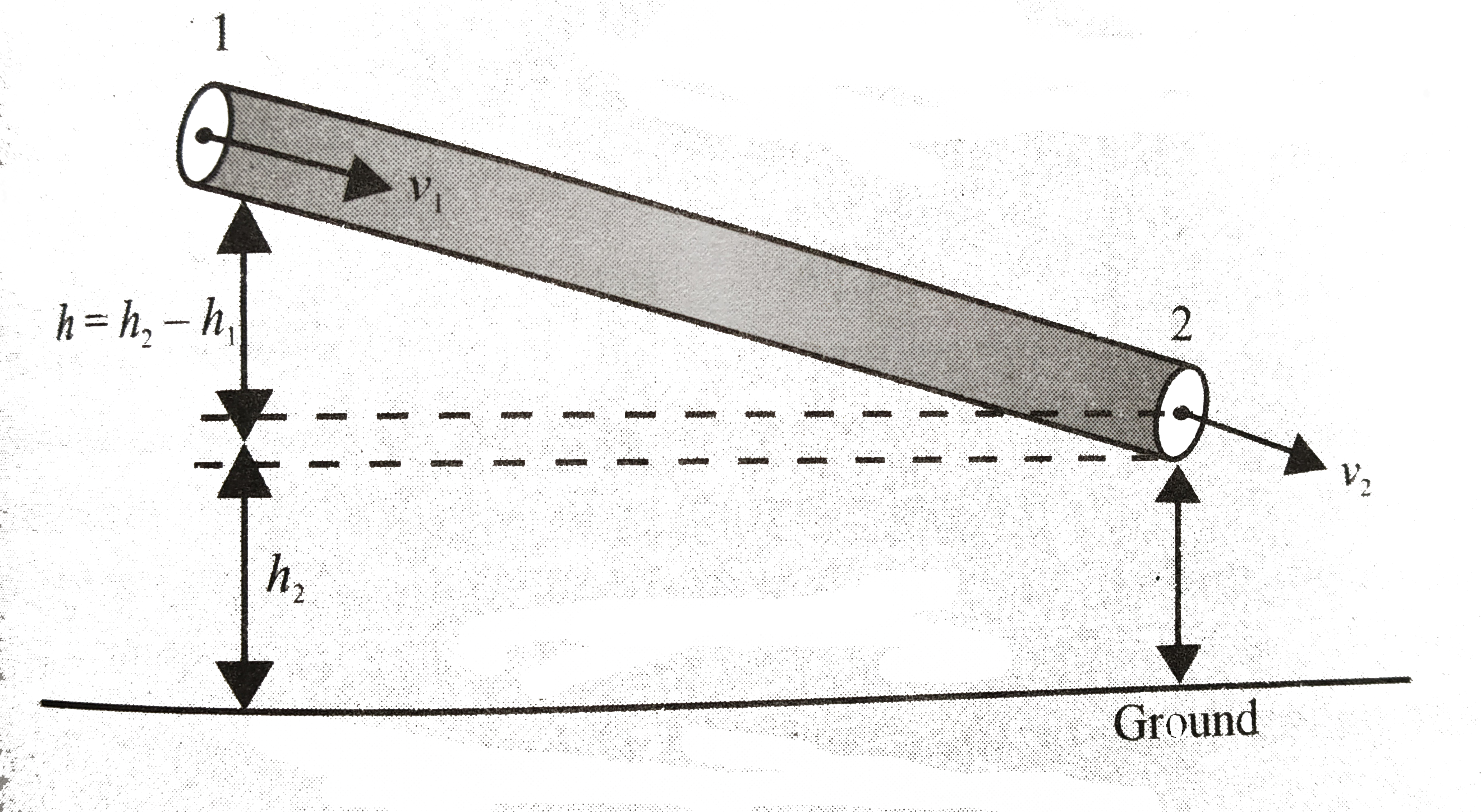At two points on a horizontal tube of varying cross-section, the radii are 1 cm and 0.4 cm, velocities of the fluid are v1 and v2 and the pressure difference (P1−P2) between these point is 4.9 cm of water Then the value of √(v2)2−(v1)2 is
3.13 cm/sec
98 cm/sec
9.8 cm/sec
60 cm/sec
The correct Answer is:B
by Bernouli's theorem
P1+12ρv21=P2+12ρv22
Where ρ is the density of the liquid.
∴ (P1−P2)=12ρ(V22−v21)
∴ v22−v21=2(P1−P2)ρ
But P1−P2=4.9×ρ×g
∴ v22−v21=4.9×ρ×g×2ρ
=4.9×2×980=98×98
∴ √v2−v1=98cm/sec
Topper's Solved these Questions
- BOOK - MARVEL PUBLICATIONCHAPTER - FRICTIONAL IN SOLIDS AND LIQUIDS EXERCISE - TEST YOUR GRASP10videos
FRICTIONAL IN SOLIDS AND LIQUIDS
- BOOK - MARVEL PUBLICATIONCHAPTER - FORCE, WORK AND TORQUEEXERCISE - TEST YOUR GRASP10videos
FORCE, WORK AND TORQUE
- BOOK - MARVEL PUBLICATIONCHAPTER - MAGNETIC EFFECT OF ELECTRIC CURRENT EXERCISE - TEST YOUR GRASP10videos
MAGNETIC EFFECT OF ELECTRIC CURRENT
Similar Questions
Water is flowing through a horizontal pipe of varying cross-section. If the pressure of water equals 2 cm of Hg where velocity of flow is 32cms−1, what is the pressure at another point where the velocity of flow is 40cms−1?
View SolutionWater flow through horizontal pipe of varying cross-section at the rate of 1/2 liter per second. Determine the velocity of flow of water at a point where the diameter is (a) 4cm (b) 2cm.
View Solution
Knowledge Check
- Question 1 - Select One
At two points on a horizontal tube of varying cross section carrying water, the radii are 1cm and 0.4cm. The pressure difference between these points is 4.9cm of water. How much liquid flows through the tube per second?
A100c.c, per secB80 c.c per secC50 c.c per secD70 c.c per sec - Question 2 - Select One
At two points on a horizontal tube of varying cross section carrying water, the radii are 1 cm and 0.5cm. The pressure difference between these points is 6 cm of water. How much liquid flows through the tube per second ?
A100c.c. per sB98c.c. per sC88c.c. per sD70c.c. per s - Question 3 - Select One
Water flows steadily through a horizontal pipe of a variable cross-section. If the pressure of the water is p at a point , where the speed of the flow is v. What is the pressure at another point , where the speed of the flow is 2 v ? Let the density of water be 1gcm−3.
Ap+(32)ρv2Bp−2ρv2Cp−3ρv2Dp−(32)ρv2
A fluid is flowing through a horizontal pipe of varying cross - section, with speed vms−1 at a point where the pressure is P Pascal .
At another point where pressure is P2
Pascal its speed is Vms−1. If the density of the fluid is ρ kg m−3 and the flow is streamline, then V is equal to :View SolutionA pipe of varying area of cross-section is held such that its axis is horizontal. At two cross sections A and B, its radii are 8 cm and 4 cm. If velocity of water at A through the pipe is 16 cm s−1 and pressure at A is 10−6 dyne/cm2 , find the pressure at cross-section B.
View SolutionWater flows through a tapering horizontal tube whose radii of cross-section of the ends r1=20cm and r2=10cm. The velocity of water at the points for the radius of cross-section r1 is v1=2ms−1 . The force imparted by the emergiang water at the other end of teh tube is nearly 2×10nN. What is the value of n ?
View SolutionA liquid moves in a smoothh tube of uniform cross section. Find the pressure P2 at point 2 of the tube if the pressure at point 1 of the extended tube is P1 and the vertical distance between points 1 and 2 is h. brgt
 View Solution
View SolutionWater flows steadily through a horizontal pipe of a variable cross-section. If the pressure of water is p at a point where the velocity of flow is v, what is the pressure at another point where the velocity of flow is 2v, ρ being the density of water?
View Solution

